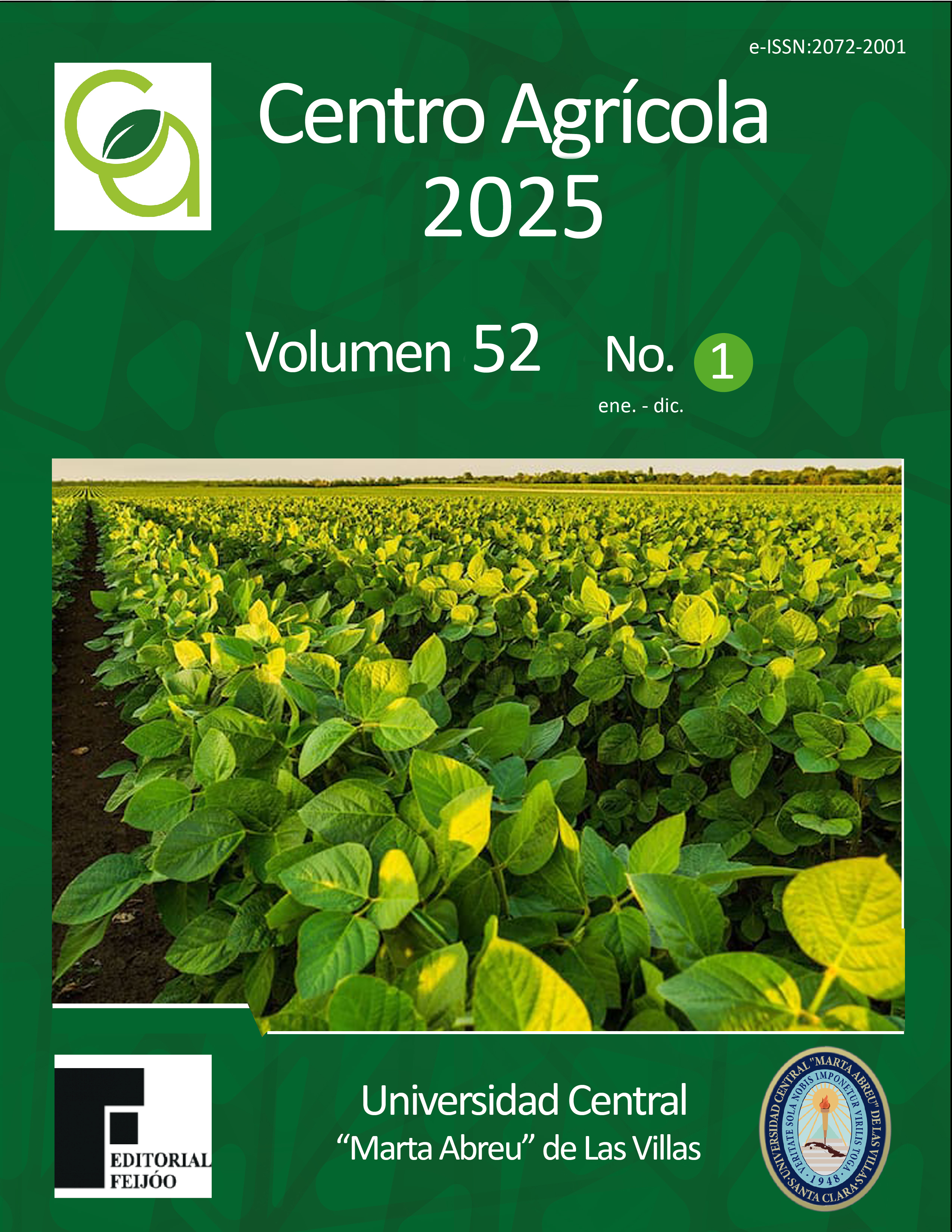CF: cag201242438
ARTÍCULO DE INVESTIGACIÓN
Variación del fósforo y potasio asimilables en el suelo inducida por la fertilización mineral continuada y el monocultivo
Variation of assimilable phosphorus and potassium on soil induced by continued mineral fertilization and monoculture
Grethel Lázara Sieiro-Miranda1*
Pablo Pablos Reyes2
Ledisliana Vázquez López2
Isaías Machado Contreras2
Rafael Villegas Delgado2
1 Centro Meteorológico Provincial Sancti Spíritus, Comandante Fajardo final s/n, Sancti Spíritus 60100, Sancti Spíritus, Cuba
2 Instituto de Investigaciones de la Caña de Azúcar, carretera CUJAE km 1½, Boyeros 10800, La Habana, Cuba
*Correspondencia: Esta dirección de correo electrónico está protegida contra spambots. Usted necesita tener Javascript activado para poder verla.
RESUMEN
Contexto: El suelo funciona como un medio de soporte para las plantas a través de un equilibrio único e interacciones de sus componentes físicos, químicos y biológicos. El uso de fertilizante mineral exclusivamente bajo la agricultura intensiva y el monocultivo de la caña de azúcar contribuyen a la degradación paulatina del suelo y reportan una pérdida acelerada de la fertilidad del mismo debido al uso exigente y preferencial de algunos nutrientes.
Objetivos: Identificar las variaciones del fósforo y potasio asimilables en el suelo inducidas por la fertilización mineral continuada y el monocultivo.
Métodos: En un suelo Vertic Eutric Cambisols se estudió la interacción NPK durante 17 años con régimen de humedad en secano, en un diseño de bloques al azar con 15 tratamientos y cuatro réplicas. La variación de las variables en el tiempo, se determinó por diferencia entre el contenido inicial (t = 0) y el final (t = 17 años). El procesamiento estadístico se realizó con el software Statistica v.8. Los registros para ambos momentos se compararon mediante la prueba t de Student y la prueba de Duncan para rangos múltiples.
Resultados: Con la fertilización potásica, inferior a 200 kg ha-1 de K2O y la aplicación residual, disminuyó el potasio asimilable al final del período.
Conclusiones: Las dosis de fósforo aplicadas por encima de 75 kg ha-1 de P2O5 favorecieron el contenido del nutriente en el suelo.
ABSTRACT
Context: Soil serves as a support medium for plants through a unique balance and interactions among its physical, chemical, and biological components. The exclusive use of mineral fertilizers under intensive agriculture and the monoculture of sugarcane contribute to the gradual degradation of the soil and report an accelerated loss of its fertility due to the demanding and preferential use of certain nutrients.
Objectives: To identify variations in assimilable phosphorus and potassium in the soil induced by continued mineral fertilization and monoculture.
Methods: In a Vertic Eutric Cambisol soil, the NPK interaction was studied over 17 years under rainfed moisture conditions, using a randomized block design with 15 treatments and four replicates. The variation in variables over time was determined by the difference between the initial content (t = 0) and the final content (t = 17 years). Statistical processing was performed using Statistica v.8 software. Records for both time points were compared using the Student’s t test and Duncan's multiple range test.
Results: With potassium fertilization less than 200 kg ha⁻1 of K2O and residual application, assimilable potassium decreased by the end of the period.
Conclusions: Phosphorus doses applied above 75 kg ha⁻1 of P2O5 favored the nutrient content in the soil.


